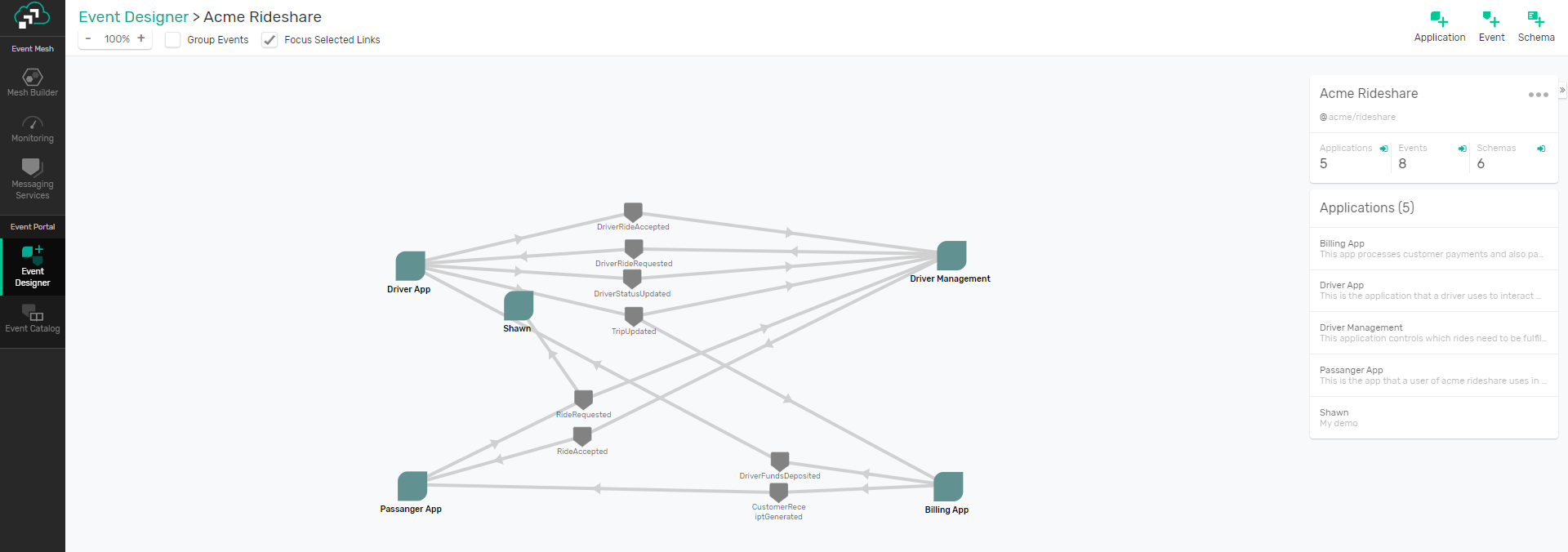If you have been reading the blogosphere at Solace (which I am sure, right now, you are 😊), you’ll know that we wrote a series of blogs to frame the challenges and solutions to Event-Driven Architecture (EDA).
To recap: the series started with Is Loose Coupling a Downside of Event-Driven Architecture? where I explained how the benefit of loose coupling causes issues with deployment and management of event-driven applications. With that hypothesis in mind, I co-authored Replicating the Success of REST in Event-Driven Architecture with Fran Mendez of AsyncAPI. We analyzed the RESTful ecosystem, its support for specifications and tooling, and how it enables rapid/agile development of distributed applications. Finally, API Management, Meet Event Management was the culmination of the series where we laid out our total vision for an Event Management Platform, with the biggest gap being the lack of what we called an Event Portal.
As anyone who has tried to build anything knows, it’s faster and easier to write down a vision than it is to implement it! So, for the last few months, our engineering team has been feverishly making our dreams for an Event Portal a reality. I can happily report that they have made tremendous progress!
The purpose of this blog is to explain what the Event Portal contains, how it will be rolled out, and what to look forward to in the near future. Really, it’s as if we are announcing the birth of a baby! It’s cute and cuddly but far from perfect, as any new parent will tell you!
On to the fun stuff
What does this magical, mystical Event Portal contain and do right now? Essentially, we’ve distilled the Event Portal into two logical components: the Event Designer and the Event Catalog.
The Event Designer is a place where application teams can collaborate and design all aspects of an event-driven architecture. It is through the Event Designer where you will be able to create new events and associate the payload schema to these events. Next, the event-driven application interface can be described by defining what events are consumed and produced. Then, the developer can export that application interface—complete with all event definitions and schemas—into an AsyncAPI 2.0.0 Specification document that can be used for code generation.
Thus, the development experience mirrors that of RESTful services! In addition, since Events act as the glue between applications (and we know all the apps that consume/produce each one), it is possible to view the overall application choreography and relationships through a network graph. So, while at runtime your applications are unaware of each other and loosely coupled, the Event Portal provides you total awareness of these interactions, enabling you to design and manage the event-driven ecosystem.
The Event Catalog acts as a storefront for all events within your organization which facilitate the sharing of events and aid in design-time discovery. So, if you have invested the time and energy into the creation of event definitions and associated payloads, don’t you want others to be able to use them as well? The Event Catalog solves the challenge that organizations have faced for years: How to enable reuse of their event assets to both maximize their return on investment and continue to innovate through providing new real-time events and insights.
In our example above, this means that the Acme Rideshare app domain events can be used by other teams throughout Acme. The Event Catalog enables users to browse for events and schemas by grouping by application domains. But what if you have no idea what group to look in? Our Catalog enables rich and robust keyword search that searches not only the metadata fields but also the payload schemas themselves, so if you are interested in a particular field it will find the associated payload schema and from there you can find the related events. Pretty slick!
Ultimately, these two components are the foundation for all future components and will be further enhanced in future releases.
Now that you are thoroughly excited and itching to get your hands on it, let me explain our roll-out plan.
As of the writing of this blog, the Event Portal is now available through our Early Access (EA) phase. This phase enables keen organizations (like yours surely must be at this point) to prototype using the Event Portal in return for their candid feedback. It’s a win-win in that these select users get familiar with the tool’s current capabilities while also being able to influence its future capabilities, and we get the feedback that helps make the Event Portal even better. Contact us if you’re interested in Early Access!
The next phase will be our production-ready offering in Q1 2020. There is nothing like hitting the new decade running! When the Event Portal is customer ready, it will magically be added to the Solace PubSub+ Event Broker: Cloud Console for you to check out.
One thing we have noticed is that the event-driven architecture world is lacking Guidelines and Best Practices. Because of this, we are channeling and compiling our nearly two decades of experience using EDA and modern messaging to help the enterprises you know and rely on handle their most mission-critical challenges. The Event Portal will provide you guidance in the creation of topic names and subscriptions so that you have the most robust and flexible event-driven architecture possible!
For me, 2020 cannot come soon enough! I sincerely hope you share that sentiment as well!
Be sure to check out our PubSub+ Event Portal Early Access Demo below.
Explore other posts from category: Event Portal

 Jonathan Schabowsky
Jonathan Schabowsky


